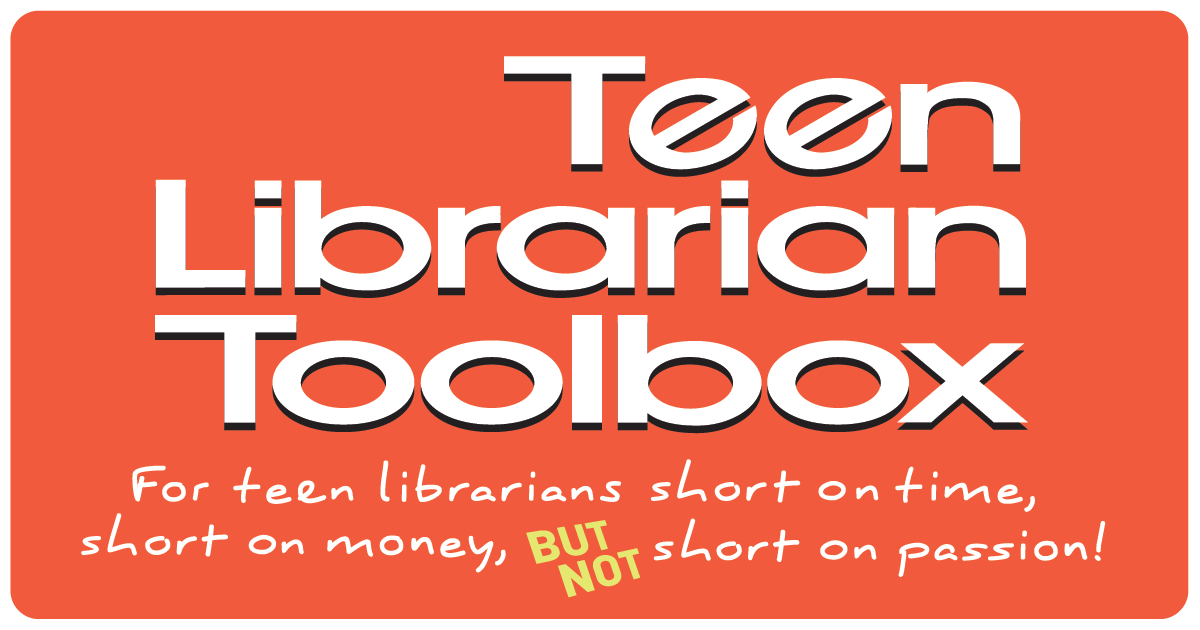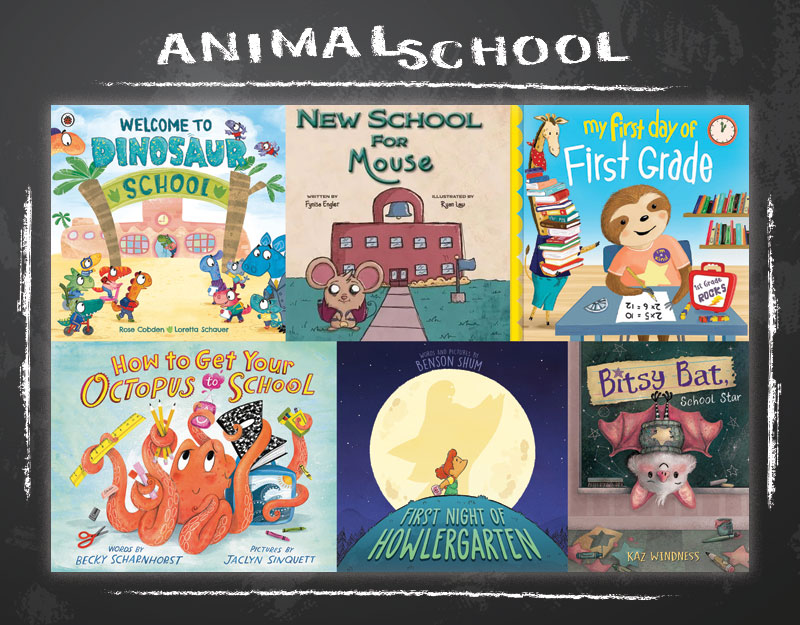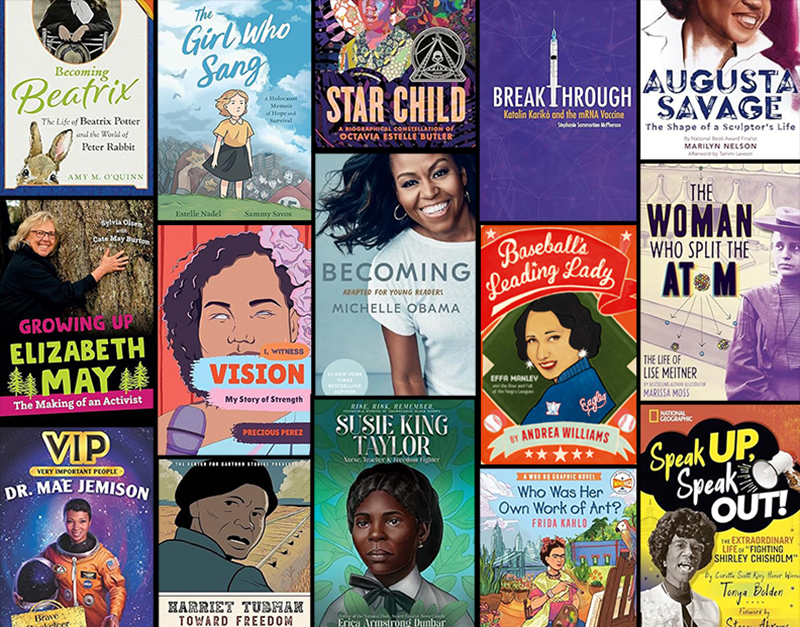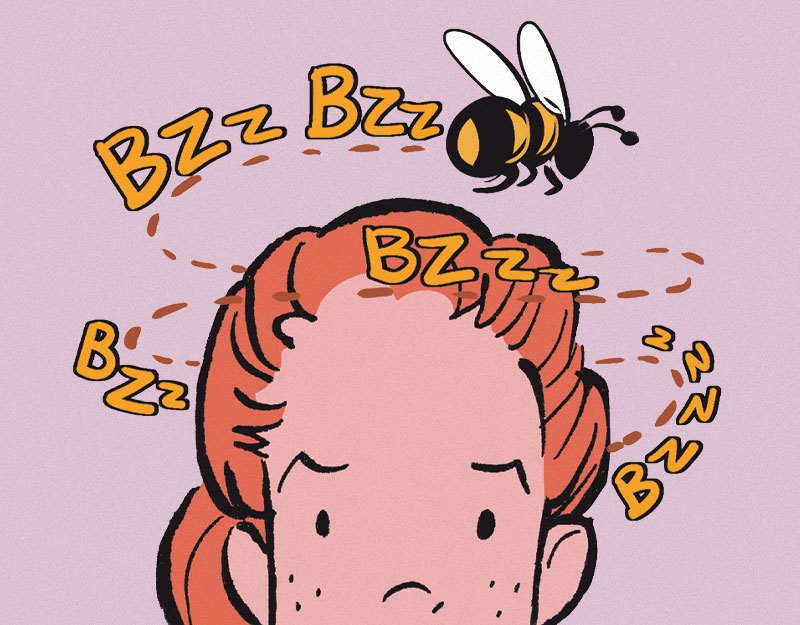Serving Full T.I.L.T. (Teens in Libraries Today): By the numbers, making the case for teen services with demographics
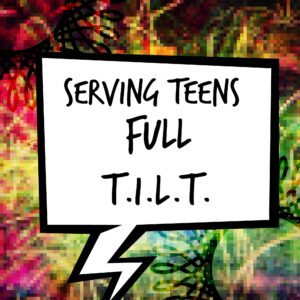 The idea for Serving Full T.I.L.T. began with a seemingly simple question: How do you convince library administrators, staff and your local community that we need to be serving teens? One of the answers seems obvious to me and amounts to basically why would you want to invest in children and then start ignoring them when they become teenagers? If our goal is to meet the needs of our community, that has to include teenagers. Teenagers are a part of our community, they have needs and failing to help meet those meets is detrimental to us all. And if another goal is to grow lifelong learners and library users/supporters then we would be harming ourselves as well as our communities to neglect the unique needs of teenagers. But many administrators and staff want more information, often in the forms of numbers and facts as opposed to philosophical underpinnings. Library budgets are tight, which translates into tight resources. So over the next few weeks (full schedule at the end of this post), we ( Heather Booth, Eden Grey, Rebecca Denham and myself) will be trying to work on building a strong case for YA library services. Today we start with a basic demographic overview of how many teens there are in the U.S., what their lives look like, and what we need to know to start truly understanding who they are and where they are coming from. This information is a good starting point, but you will also want to use your resources to build a local portrait as well.
The idea for Serving Full T.I.L.T. began with a seemingly simple question: How do you convince library administrators, staff and your local community that we need to be serving teens? One of the answers seems obvious to me and amounts to basically why would you want to invest in children and then start ignoring them when they become teenagers? If our goal is to meet the needs of our community, that has to include teenagers. Teenagers are a part of our community, they have needs and failing to help meet those meets is detrimental to us all. And if another goal is to grow lifelong learners and library users/supporters then we would be harming ourselves as well as our communities to neglect the unique needs of teenagers. But many administrators and staff want more information, often in the forms of numbers and facts as opposed to philosophical underpinnings. Library budgets are tight, which translates into tight resources. So over the next few weeks (full schedule at the end of this post), we ( Heather Booth, Eden Grey, Rebecca Denham and myself) will be trying to work on building a strong case for YA library services. Today we start with a basic demographic overview of how many teens there are in the U.S., what their lives look like, and what we need to know to start truly understanding who they are and where they are coming from. This information is a good starting point, but you will also want to use your resources to build a local portrait as well.
In Understanding the Community, Pramila Aggarwal suggests looking at the following areas to help you better understand and define your local community:
- Geographic, corporate, jurisdictional boundaries
- Demographics, statistics, subgroups
- History, community strengths
- Political structure, governance
- Economic structure, major or key employers
- Community action organizations
- Civic and service problem
Not all of these will apply to the idea of serving teens, though understanding local politics and other areas can certainly help you understand who they key players are in your community to rally support, to identify any potential detractors, and to find other service organizations that serve teens to create networking partnerships and share information. Today we will look at basic demographics and break that down to help us develop a portrait of who our teens are today.
ADVERTISEMENT
ADVERTISEMENT
How many teens are there?
Why serve teens? The answer seems simple to me, because they are a unique group with unique developmental needs and we want to meet those because we are in the business of serving the people in our communities. Corporations and marketers realized not only the sheer number but the spending influence that teens have years ago and have very successfully tapped into the teen market. Many libraries, however, have lagged behind in this knowledge and we are still arguing for libraries to create and maintain quality services to teens. But the numbers suggest that if we really want to serve our communities, we need to do better with teen services.
According to U.S. Census Bureau estimates, there were 41,844,000 youth age 10-19 in the United States, 14% of the total U.S. population, in 2012 [1]. (Source: Act for Youth)
According to the YALSA paper on the future of library services for and with teens, “There are over 40 million adolescents, aged 12–17, living in the United States today, and they use libraries”. We can’t be in the business of ignoring 40 millions teens if we are serious about our mission to our local communities. And it’s not just about building future library users, it’s about understanding that teens today are – or can be – library users; they have real needs and we fail our communities if we fail to provide appropriate and quality services and collections to teens. Teens are not just the adults of the future, they are very real people with very real needs today, we should be in the business of meeting those needs.
You can use tools like the U.S. Census Bureau State and County Quick Facts to develop a more community specific portrait. City-Data is another resource that can help you develop a clear statistical portrait of your local service community. Don’t forget that libraries usually serve large areas and there can be a wide variety of smaller communities within those service areas. In Ohio, for example, many libraries serve large counties and what the local service area looks like can differ from branch to branch. So I think our goal should be to understand the big picture, but also all of the smaller pictures around us.
Who are teens today?
Part of the discussion permeating the Twitterverse and online universe is the need for more diversity to be represented in YA literature. The #WeNeedDiverseBooks campaign is important because we do in fact live in a diverse world. Whatever your immediate service community may or may not look like, the truth remains that the United States is an increasingly diverse nation and understanding that helps us better understand and serve our teens.
According to that same YALSA paper mentioned above, “there are currently 74.2 million children under the age of eighteen in the United States; 46% of them are children of color.” The YALSA paper goes on to state that, “today more than one-fifth of America’s children are immigrants or children of immigrants”.
Approximately 5% of teens today have some type of a disability. (Source: Unicef Children and Young People with Disabilities Fact Sheet)
According to the NCCP, approximately 20% of adolescents have a diagnosed mental health issue. In addition to their own mental health, a variety of teens are living in houses where they are being raised by a parent who suffers from some type of mental health issue. Approximately 1 in 4 adults in the U.S. suffer from a diagnosable mental disorder. These are the parents, grandparents, and loved ones of many of our teens.
In terms of sexuality, PFLAG New York states that “reliable estimates indicate that between 4 and 10% of the population is gay, which means in a public school system of more than one million, like New York City, there are at least 40,000 to 100,000 gay students.” And remember that gender and sexual identity goes beyond just being gay or straight to include things like transgender youth, asexuality, questioning teens and more. For more information check out Amanda MacGregor’s resources for building collections and serving LGBTQ teens. Hannah Mitchell put together this Prezi on Statistics About QUILTBAG Kids that also provides some good statistical information.
When discussing the spiritual lives of teens the Barna Group notes that, “Teenagers are consistently among the most religiously active Americans, with nearly 6 out of every 10 teens engaged in some type of group spiritual activity in a typical week.” But having a spiritual life does not automatically translate to evangelical Christian. For example, 1% of the U.S. population is Muslim, another 1% is Buddhist and around 2% are Jewish. 16% are unsure or identify as Atheist. (Source: Pew Research Statistics on Religious and Public Life Project ; Child Trends Research Brief on Spirituality and Religiosity Among Youth)
The high school dropout rate has declined over several years, but still rests somewhere around 7.4% according to the National Center for Education Statistics. In total 1.2 million students drop out, or 1 student every 26 seconds according to Do Something. The flip side of course means that over 90% of students go one to graduate from high school, though 25% fail to graduate on time.
When looking at teen pregnancy, it is interesting to note that teen birth rates are also declining. In the year 2013 there were 26.6 births for every 1,000 teen girls. (Source: Office of Adolescent Health)
When looking at drug and alcohol use, it’s interesting (though not in a good way) to note that by their senior year 50% of students report having abused a drug of some kind. You can find more teen drug and alcohol use statistics at Teen Rehab.com or at the CDC.
Nationwide violence is down, and this is also true for acts of violence committed by teens. However, homicide remains a leading cause of death among youth and assault incidences result in around 700,000 youth seeking emergency care each year. (Source: CDC Youth National and State Violence Statistics) Another source maintains that youth are likely to be both the main perpetrators and victims of violence. Dating violence is also another important statistics to note as 1.5 million high school teens report being the victim of abuse by a dating partner (Source: Love is Respect)
Find a variety of teen statistics in infographic form here
The truth is that teens, like all demographic groups, are a very diverse group. Recognizing and understanding diversity is important, communicating that diversity is even more so, especially in those smaller town communities where our co-workers may not see that diversity and understand the importance of meeting the needs of not only the perceived majority populations, but the populations that are often under represented. In other area of statistics it is interesting to note that many of the negative complaints you hear lodged against teens – for example teen pregnancy and drop out rates – have been dropping for a pretty steady period. They are still significant factors, but the perception that some have regarding teens seems to be inconsistent with the facts. As teen advocates, knowing and communicating this information is important.
What is their financial situation?
Perhaps one of the greatest factors that affect the teens we serve are the economic situations in their homes. Income can affect a wide variety of factors, from whether or not our teens have their basic needs met to what types of access they have to technology and education resources. Understanding the economics of our local communities can impact that types of services we provide. Libraries in lower income areas often find themselves challenged to meet more basic survival needs as well as education and recreation needs by providing things like summer lunch programs. Whereas higher income areas may focus more on high tech and college preparation programming. It’s not because these things aren’t important everywhere, but because different communities have different primary and immediate needs.
More than 16 million children in the United States – 22% of all children – live in families with incomes below the federal poverty level – $23,550 a year for a family of four. Research shows that, on average, families need an income of about twice that level to cover basic expenses. Using this standard, 45% of children live in low-income families. (Source: NCCP)
Median family income in U.S. households with children was $59,500 in 2012. This amount is low by comparison with income in 2008, but higher than in the intervening years [9].
The percentage of adolescents (age 12-17) living in families with low income increased from 36% in 2006 to roughly 41% in 2012 [10]. Nineteen percent of this age group live below the poverty line [10]. (Source: Act of Youth)
Recent reports indicate that in the year 2013 1 in 30 youth were homeless at some point.
In 2012, 31% of children lived with parent(s) who did not have steady, full-time employment [11]. In 2011, 22% of all children (under age 18) lived in families that were at times unable to provide enough food [6]. (Source: Act for Youth)
The number I hear repeated frequent from a variety of sources is that 1 out of 5 youth are living with what is called food insecurity, the idea that income is unstable and they are not sure where their next meal will come from.
Not all communities are struggling financially, but somewhere around 45% of our teens are. Understanding this number is essential to providing balanced services. Even in well off communities, that doesn’t mean that all of our patrons have access to e-readers so we can’t abandon physical books altogether. Even schools that give a laptop or tablet to each student needs to be aware of the fact that a percentage of their students go home to homes without the wireless access to use them outside of school. Understanding the economic diversity of our local service communities is essential to providing access to resources, services and more.
What do their families look like?
As I have spent time with my teens over the years I have marveled over what a family can look like. My tween is currently the only person with an intact nuclear family that she knows, though we have had our own fair share of challenges. I have worked with teens being raised in foster homes, by grandparents, with a network of half and step siblings, etc. Understanding the various ways that a family can look helps us understand the unique challenges our teens can face. Many of them split time between more than one house, which comes with its own challenges. And yes, some of them are growing up in their childhood home with an intact nuclear family. Some have no siblings while others have 3, 4, 5 or more.
ADVERTISEMENT
ADVERTISEMENT
The increase in the number of only children you think you see is not in your imagination. The rate of onlies has doubled. 20% of children are now being raised as only children.
Further digging revealed that the US Census government report indicates that 56% of married households have no children in the home. Less than 10% have 3 or more children under the age of 18 in the home. These statistics vary based on age and various other demographics. {www.census.gov/prod/cen2010/briefs/c2010br-14.pdf} (from a previous post on Siblings)
Recent findings indicate that 55% of 15 to 17 year olds do not live in an intact family.
Where Do Teens Live?
Remember the story about the city mouse and the country mouse? Just out of curiosity I thought I would look to see where teens today live. According to the numbers, it looks like a lot of teens live in suburbs. Though some of us are in city libraries so that number if irrelevant to us. Others of us can pull in from both rural areas and our local cities, I know this was true for me when working in Ohio where it goes from one to the other quite quickly.
In 2002, over half (54%) of adolescents age 12-17 lived in suburbs, 27% in rural areas, and 19% in central cities [7].
In 2007, about 82% of children lived in large urban or suburban areas, and nearly 9% lived in small towns (under 50,000) or more rural areas [8]. (Source: Act for Youth)
The truth is, I am sure there is a lot more information we could research to help us build those portraits of teens that we have been talking about. If you have information to add, please do so in the comments. But I think this is a good starting point. Next Wednesday, Rebecca Denham is going to discuss some basics of adolescent development that will better help us serve our teens.
Resources Consulted:
- http://www.actforyouth.net/adolescence/demographics/ (Basic demographics)
- http://www.pewinternet.org/data-trend/teens/internet-user-demographics/ (Technology use)
- http://ecommons.library.cornell.edu/bitstream/1813/19160/2/TeenDemographics.pdf (More basic demographics)
- Teens (13-19) Market Research Reports & Teens (13-19) Industry Analysis | MarketResearch.com (Market reserach)
- http://help.outbrain.com/customer/portal/articles/1673892-content-marketing-to-teenagers-trends-and-platforms?b_id=1524 (Market research)
- Teens and Youth | Pew Research Center’s Social & Demographic Trends Project (Demographics and trends research)
- Poverty: http://www.nccp.org/topics/childpoverty.html (Child poverty statistics)
- Intact Families: New Report: Majority of U.S. Teens Don’t Live in Intact Families (Family structure)
- Sexuality: Researcher: 1 to 21 Percent of Teens May Claim to be Gay |News | Towleroad (GLBTQ statistics)
- 40% of homeless youth are gay: STUDY: 40 Percent Of Homeless Youth Are LGBT, Family Rejection Is Leading Cause (Homeless statistics)
- Average size of households in the U.S. 1960-2013 | Statistic (Household size statistics)
- America’s Families and Living Arrangements: 2013 – People and Households – U.S. Census Bureau (Household size statistics)
- Pew Research on Teens and Youth (Pew research)
- http://www.teenhelp.com/teen-violence/teen-violence-statistics.html (Teen violence statistics)
- CDC Teen Drugs Use/Abuse Statistics http://www.cdc.gov/healthyyouth/alcoholdrug/
January 14 By the Numbers, making the case for teen services using basic demographic information (Karen Jensen)
January 21 Sarcasm, Spice and Everything Awesome: The Developing Teen (Rebecca Denham)
January 28 Brain Science 101 (Heather Booth)
February 4 Asset Building 101, How using the 40 Developmental Assets can help us plan and evaluate teen programming (Karen Jensen)
February 11 Diverse teens, diverse needs (Eden Grey)
February 18 Sharing stories, how knowing and sharing the stories of our teens can help make the case (Heather Booth)
February 25 Empathy, remembering what it means to be a teen and how it makes us better teen services librarians (Heather Booth)
March 4 A Teen Services 101 Infographic (Rebecca Denham and Karen Jensen)
March 11 Talking Up Teens: Discussing Teen Services with Library Administration (Eden Grey)
Filed under: Professional Development, Serving Full TILT, Statistics, Teen Issues
About Karen Jensen, MLS
Karen Jensen has been a Teen Services Librarian for almost 30 years. She created TLT in 2011 and is the co-editor of The Whole Library Handbook: Teen Services with Heather Booth (ALA Editions, 2014).
ADVERTISEMENT
ADVERTISEMENT
SLJ Blog Network
The Ultimate Children’s Book Illustrator Gift Guide 2024
MORE 2025 ALA YMA Predictions! American Indian Youth, Asian/Pacific American Awards, and Schneider Family
More Jackson’s Wilder Adventures Coming from Papercutz | News
The Seven Bills That Will Safeguard the Future of School Librarianship
ADVERTISEMENT

